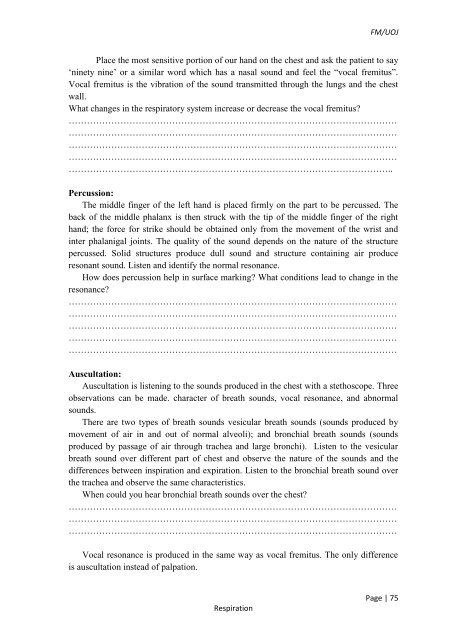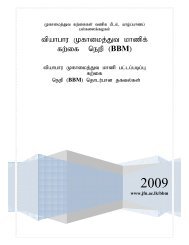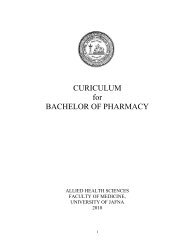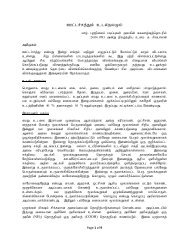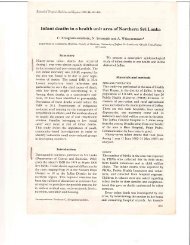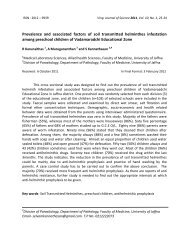MANUAL PHYSIOLOGY PRACTICAL - Repository:The Medical ...
MANUAL PHYSIOLOGY PRACTICAL - Repository:The Medical ...
MANUAL PHYSIOLOGY PRACTICAL - Repository:The Medical ...
You also want an ePaper? Increase the reach of your titles
YUMPU automatically turns print PDFs into web optimized ePapers that Google loves.
FM/UOJ<br />
Place the most sensitive portion of our hand on the chest and ask the patient to say<br />
‘ninety nine’ or a similar word which has a nasal sound and feel the “vocal fremitus”.<br />
Vocal fremitus is the vibration of the sound transmitted through the lungs and the chest<br />
wall.<br />
What changes in the respiratory system increase or decrease the vocal fremitus?<br />
………………………………………………………………………………………………<br />
………………………………………………………………………………………………<br />
………………………………………………………………………………………………<br />
………………………………………………………………………………………………<br />
……………………………………………………………………………………………..<br />
Percussion:<br />
<strong>The</strong> middle finger of the left hand is placed firmly on the part to be percussed. <strong>The</strong><br />
back of the middle phalanx is then struck with the tip of the middle finger of the right<br />
hand; the force for strike should be obtained only from the movement of the wrist and<br />
inter phalanigal joints. <strong>The</strong> quality of the sound depends on the nature of the structure<br />
percussed. Solid structures produce dull sound and structure containing air produce<br />
resonant sound. Listen and identify the normal resonance.<br />
How does percussion help in surface marking? What conditions lead to change in the<br />
resonance?<br />
………………………………………………………………………………………………<br />
………………………………………………………………………………………………<br />
………………………………………………………………………………………………<br />
………………………………………………………………………………………………<br />
………………………………………………………………………………………………<br />
Auscultation:<br />
Auscultation is listening to the sounds produced in the chest with a stethoscope. Three<br />
observations can be made. character of breath sounds, vocal resonance, and abnormal<br />
sounds.<br />
<strong>The</strong>re are two types of breath sounds vesicular breath sounds (sounds produced by<br />
movement of air in and out of normal alveoli); and bronchial breath sounds (sounds<br />
produced by passage of air through trachea and large bronchi). Listen to the vesicular<br />
breath sound over different part of chest and observe the nature of the sounds and the<br />
differences between inspiration and expiration. Listen to the bronchial breath sound over<br />
the trachea and observe the same characteristics.<br />
When could you hear bronchial breath sounds over the chest?<br />
………………………………………………………………………………………………<br />
………………………………………………………………………………………………<br />
………………………………………………………………………………………………<br />
Vocal resonance is produced in the same way as vocal fremitus. <strong>The</strong> only difference<br />
is auscultation instead of palpation.<br />
Respiration<br />
Page | 75


